Christmas
It’s looking a lot like Christmas in our room.
Oh the places we shall go…
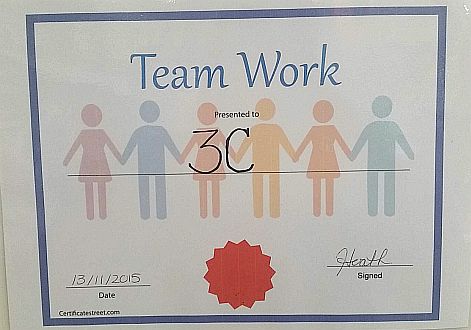
Mrs Brown, one of our beautiful teachers ready for the day
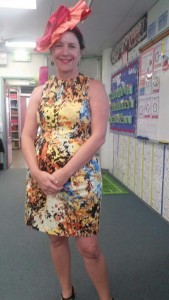
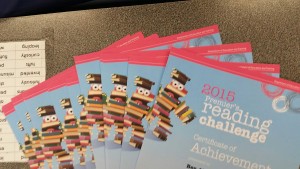
We are so excited! During group reading, Year 3C found a new sound. Bobby and Kurt were great speech sound (SSP) detectives, they helped find the sound ‘c‘ as in ‘cello’ where the ‘c‘ says ‘ch‘. Miss Emma wrote us a poem and the new sound will now be added to the sound clouds. You can also view the poem on YouTube.
Properties of a solid.
This week we investigated how matter can change state. Water can be a solid, liquid or a gas. We investigated how chocolate can change from a solid to a liquid by adding heat.
First we used our senses to observe the properties of the chocolate as a solid. It was brown, solid, smooth and hard. Next we held the piece of chocolate in our hands. After a few minutes, the chocolate was still brown, but it was now runny and slippery and it changed shape. The heat had transferred from our hand to the chocolate and melted it. It was now a liquid.
What is viscosity?
This week we investigated the viscosity of liquids. We discovered that viscosity means how fast or slow a liquid flows. We ran a viscosity race with 4 liquids choosing from BBQ sauce, oil, water, shampoo and syrup. We made sure it was a fair test – the only element we changed was the type of liquid. We predicted which liquid would win the race. Next we carried about the test and observed what happened. We then recorded analysed and evaluated our results.
Water had the lowest viscosity and flowed the fastest. Shampoo and syrup had the highest viscosity and took the longest to flow.
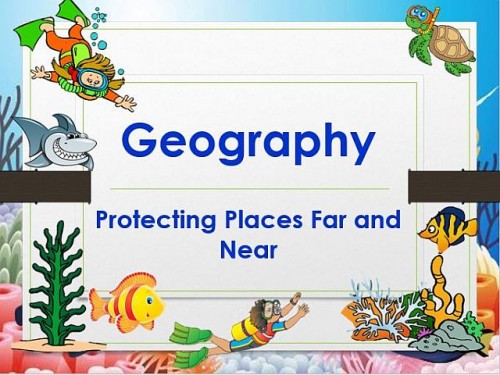
This term in geography we are completing a inquiry unit called ‘ Protecting Places Far and Near’. We are going to be studying the stunning Great Barrier Reef. Did you know:
We will be researching many such fascinating facts about the Great Barrier Reef. We will also link our art lessons. One of the things we will make is a Great Barrier Reef diorama. We are lucky to have the magnificent Great Barrier Reef just of the Bowen coast. This is a great website to start learning about the Great Barrier Reef.
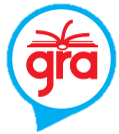 We are excited to be joining the Global Read Aloud Challenge in Term 4. Classes from around the world have joined to promote reading. We are going to read and study book ‘The Year of Billy Miller’ written by Kevin Henkes.
We are excited to be joining the Global Read Aloud Challenge in Term 4. Classes from around the world have joined to promote reading. We are going to read and study book ‘The Year of Billy Miller’ written by Kevin Henkes.
This is great story about Billy who is just about to start Year 2, and the problems he faces and solves. Many of us will have connections with this book.
We are looking forward to connecting globally with classes from around Australia and the world and discuss our predictions, thoughts and feelings about the book. We will upload our posts to a blog that has been set up so our Queensland schools can participate.
In September we entered the Bebras Australian Computational Thinking Challenge. This is an online task consisting of 15 questions that promote computational skills.
The challenge will help us when the new Australian digital technologies curriculum is implemented next year. We really enjoyed choosing whether we wanted to work individually or in a small group. Collaborating helped with our thinking.
The challenge was difficult, but we worked through them with enthusiasm. Once the results are in, we will be able to check our scores and hand out certificates to everyone who participated. The great thing is we will also be able to follow the solutions and work through them again.
How lucky were we to have Mr Mitchell give Year 3’s a talk about his time living and working up in the Torres Strait Islands.
We have been studying continuity and change in communities in Australia. Mr Mitchell gave us a fascinating insight into the history and culture of the Torres Strait Islanders. He brought in many artefacts and photos for us to study. We loved the spears and the drum made with snake skin.
Layton brought in his beautiful little chicks. We all had a great time cuddling them. He told us he cares for them by feeding them, giving them water and shelter.
This week we are celebrating NAIDOC week in Australia. NAIDOC stands for National Aborigines and Islanders Day Observance Committee.
NAIDOC Week is held in the first full week of July. It is a time to celebrate Aboriginal and Torres Strait Islander history, culture and achievements and is an opportunity to recognise the contributions that Indigenous Australians make to our country and our society.
The theme this year is ‘We all Stand on Sacred Ground: Learn, Respect and Celebrate‘.
We have been extremely honoured to have Aicey Zaro and his wife Bernice, come work with our students to create a new mural adjacent to the Yarning Circle on the Poole St side of the music hall. Each student in the school painted and placed their handprint on the mural. The mural shows the hills, the reef and ocran as well as a turtle which is one of our school symbols.
Our official NAIDOC celebrations and opening of the Yarning Circle and Mural will be held on Friday 7 August at a special parade where the classes will be seated on the grassed area in front of the administration block. It is hoped one of the local Elders will be conduct a Smoking Ceremony which is of cultural significance.
On Tuesday we had a visit from NED. NED is a cartoon character who teaches us:
N – Never give up
E – Encourage others
D – Do your best
What a great show including some awesome yo-yo tricks. The message is exactly what we have been learning about in our values ‘You Can Do It‘ program.
Welcome back to term 3, it certainly promises to be an exciting term. Here is a taste of what we are learning this term.
English
In unit 5 we are learning to retell a narrative from a different point of view. We are studying traditional tales and The Lorax by Dr Seuss. Our assessment is a comprehension task. We are also going to choose a character from The Lorax and write from their perspective.
This display shows our ‘Know and Do’ chart, the exemplar and the criteria sheet. Everything we need to know in order to complete our tasks.
Science
This term we are studying ‘Heat Energy’. So far we have learnt that heat is energy and that there are 4 types of energy – rubbing energy, chemical energy, electrical energy and heat from the sun.
This week we carried out an experiment to see how heat is transferred. We heated up a bowl of porridge and took temperature readings every two minutes for 8 minutes. Our results showed the temperature readings went down each time we took the reading.
We concluded that the heat moved from the hot porridge into the cooler air.
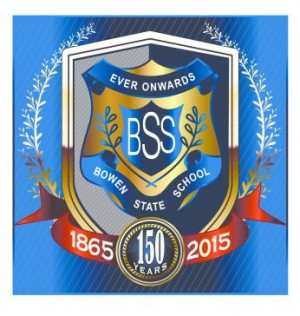
I feel extremely privileged to be able to celebrate our schools 150th year since opening over the week-end. What a fantastic time we had. It was wonderful to see so many old pupils and staff make the journey back to school. Mrs Brabon, our present Principal rang the old school bell to signal our day had begun!
We had wonderful stalls (plants, bottles, books, Devonshire teas, cent sales) and displays (cars, scouts, pottery) as well as rides for the children. Mrs Nicholas, our school historian put on amazing display of memorabilia in the library. We had the oldest and youngest student present cut the cake. Our past students signed on and then had roll call before having their ‘class’ photos taken. Entertainment from the our school and other local schools and clubs was provided throughout the afternoon. An amazing day was had by all.
This year Bowen State school is 150 years old. We are celebrating this with a Fete, reunions, displays, community activities and a cake on Saturday 6th June.
In science this term, we are studying our ‘Spinning Earth’. We are investigating day and night, shadows and our place in space.
FACT
The sun is the centre of the solar system. The Earth orbits the sun once every year. The Earth rotates on its axis. As it rotates,one half of the Earth faces the sun and has daylight. The other half faces away from the sun so it has night-time. This makes night and day on Earth every 24 hours.
Watch this amazing video
This week 3C joined other classes on Padlet to improve a boring paragraph about a fire. We know that authors ban the boring bits (a seven steps writing skill) and get to the action. We worked in pairs and the results were impressive. This is our classroom display.
This is our Padlet wall.
This week we used dice to make 3 and 4 digit numbers. We then drew a number line and ordered them from smallest to greatest.
We have just started our English unit exploring spoken procedures. We are using the book ‘Charlotte’s Web by E.B. White’ to see how Charlotte gives Wilbur instructions. Wilbur and Charlotte are great friends and we can see how the author has used language to show us their relationship.
Our assessment task will be to write a spoken procedure between two characters and present it to the class. When we present our dialogue, we will think about volume (not too loud, not too soft), tone (expression) and pace (not to fast).
This is our learning wall which shows us exactly what we have to know and do for the unit.
Have a look at our amazing owls we have been working on in art.
We have started practising our typing skills at school. Here are 3 sites which will help you learn to type. Click the image or title to take you to the site.
Mother’s Day is on Sunday 11th May in Australia. In class we made a special bunch of flowers .
Materials
Method
1. Choose five or six coloured cupcake holders.
2. Flatten them out.
3. Place them on top of each other.
4. Make a hole through them using the skewer.
5. Thread the pipe cleaner through.
6. Make a loop at the top of the pipr cleaner to prevent the flower slipping off.
7. Twist another pipe cleaner underneath the flower.
8. Gather up the cupcakes and scrunch them up.
7. Open them slightly to look like flowers.
Make as many as you wish and place them together in a bundle. Give them to your mum on Mother’s Day.
Ryland, Isabella and Charley are keen gardens. They have bought seeds from home, planted them and cared for them daily. Each day they check up and see how the are doing. Ryland’s Snow Peas and Charley’s beans are doing very well. Ryland bought in some Venus Fly Traps. They don’t like full sun, so they are kept indoors. Last term we studied living and non-living things. We studied plants and seeds and decided they were living (including the Venus Fly Trap) because they grow, need food and breathe.
On Friday our school commemorated 100 years of the ANZAC landing at Gallipoli (25th May). Mrs Smith and Mrs Conway organised a moving ceremony with students from all Year levels taking part in some way. Michael Enchong was our guest of honour. Two students from every class laid a wreath making up the words “ANZAC Lest We Forget”. Each class had made poppies to complete the class wreath. We also helped make extra poppies for the high school, which were then used to line the road for the town ceremony on Saturday. Thank you to all students and parents who came to our parade and who took part in the town march.
Here is an amazing interactive site which allows you to follow the ANZAC landing on the first day.
Click the image.
This term in Maths we are investigating 3D shapes and their properties. To do this we made 3D shapes out of straws and play dough. We cut our play dough shapes into sections to look at the 2D shapes we could see. We then investigated the properties of our shapes. We worked out how many edges, faces and vertices each shape had. We looked at the net of each shape and worked out if our shape had flat, curved or both types of surface.
Here is a great site where you can download the nets of different shapes, cut them out and make them.
Antonia from the Australian Red Cross visited our school to deliver the Pillowcase project to Year 3 and 4. The project is designed to build children’s knowledge for disaster preparedness. Each student received and an emergency card, an activity book, a household REDiPlan and a pillowcase to create their own emergency kit. Our pillowcases have arrived and we are going to decorate them by drawing a picture of our favourite place with fabric pens, early next term. Students can then take them home and fill them with the necessary items.
These are the steps we learnt about:
Step 1: Be informed
Find out what emergencies might happen in your area, where you might go if you weren’t able to go home and how to get information and help in an emergency.
Step 2: Make a plan
Make a household emergency plan to help you if there is a disaster.
Step 3: Get an emergency kit
Put together an emergency kit with everything you’ll need if you have to leave your home in an emergency or if you need to stay in your home for a long time.
Step 4: Know your neighbours
Getting to know your neighbours is an important part of preparing your household. People who know their neighbours are more likely to help each other out in an emergency.
Today 3C participated in an online writing activity with classes from 4 other schools in Queensland and South Australia (6 classes). As we write in real time, our work is published on a wall using Padlet. We use the Seven Steps to Writing Success program to help improve our writing.
We used a picture prompt to help us write a paragraph which was exciting and full of tension. One way of doing this is to use our senses and write what we see, hear touch, feel, taste and smell. We worked with partners to brainstorm our ‘sense’ words. Then we wrote a paragraph using these words, trying to make the reader want to carry on reading.
Here are some of our fantastic paragraphs. You can also visit our wall and see what all the other students wrote.
Maizey and Max B
Bang! Bang! Three Great White sharks hit the boat. and gave us a huge fright. We tipped over in the boat, the sharks were getting closer and closer. The sharks opened their jaws. We were petrified.
Ryland and Shanayd
Smash smash! The huge sharks are attacking. I was crying. My heart was thumping. The shark attacked the bottom of the boat. I can see their massive jaws. I feel very afraid and the motor for the boat won’t start.
Brock and Llogan
Boof! I fell over. What hit the boat? I need to get to shore before this fearsome storm catches me. Bang! What was happening. Half of the oar was bitten off. Suddenly I saw 3 massive Great White sharks circling our boat. I was petrified. I was sweating, my heart was pounding. Now water was coming into the boat and we were sinking. What are we going to do?
Coral and Ben
Clump, clump. What was that? Oh no the engine has gone! I can hear thunder and lightening and now our boat is sinking. Suddenly i see three enormous sharks surrounding us. I taste sweat because I am so afraid.
Sajith and Jai
Thump THUMP went the boat! Lots of sharks were surrounding us. There were massive dark stormy clouds and there was thunder. The wavers were crashing all around us. I could taste the salt water. We were all scared. AAAHHH!
Cameron and Bobby
CLUNK! CLUNK! What was that? Oh no our motor had fallen off into the deep black ocean. Fierce hungry sharks were surrounding us. That is not any shark, that is 5 Great White sharks! We were petrified and nervous. Our hearts were hammering. 2 sharks were charging right at us. Would we live?
After learning how to write sizzling starts, we have been trying to develop the middle part of our stories. One of the ways we do this is through “show don’t tell”. We need to show actions that give us a visual image of how the character is feeling. We started by choosing an emotion, brainstorm words that show, with words, how a character is feeling. Then we write about the emotion. We practised writing about many different emotions. We also used dynamic dialogue to make our characters more interesting.
This week we put all our skills together to write about the character Bill from the book ‘Matty Forever’. Bill has a secret he doesn’t want to tell Matty. However, Matty has told Bill her secret so he feels he has to let her know his. The author has not told us what Bill’s secret is yet, so we made up our own.
21st March is Harmony Day. This week our school celebrated Harmony Day. Mrs Adsett organised a history competition for us. We had to read clues, look at objects and work out which country they came from.
The whole school made bunting which was used to decorate the hall. On Thursday morning a special breakfast was set up for students, parents and visitors. We had fruit, damper, Nazi Goreng and many other special dishes prepared for us.
Our parade was wonderful with lots of students and teachers wearing orange – the special Harmony Day colour. The choir and the whole school sang special Harmony Day songs. Some students dressed up in traditional costumes and paraded on the stage for us. It was a wonderful day that brought our whole school community together.
This term we are using SSP (Speech Sound Pics) to help us read and spell. Here is a song – Let it Glow (Let it Go) using Minecraft to practise decoding.
Wow, our new playground equipment looks amazing. We have had a wonderful time climbing and playing on it today.
Year 3C are reading a chapter book called ‘Matty Forever‘ written by Elizabeth Fensham. In it Bill, a nine year old boy has just moved to a new town and met his neighbour Matty. Matty has challenged Bill to 4 fearsome tasks before he can join her club.
We decided to make up a 5th challenge for Bill showing how we use sizzling starts. Using questions is one way of hooking the reader. Students try and show how the character is feeling by using strong feeling verbs and actions that show these feelings (show don’t tell). Here are some examples of our work.
Year 3C have been practising writing persuasive texts this term. We know we need to start our writing in a way that will ‘hook’ the reader and make them want to read more. To do this, we write sizzling starts.
This week we watched a YouTube video on ‘How to Draw an Owl‘. We had great fun drawing our own owls. We will post some photos when we have finished working on them.
We have set our class goals and started filling our cups with our achievements for the year. We are adding stars that show our progress in reading, sight words, comprehension, mental maths and spelling and if we receive a Smiley badge. At the end of the year we will be able to take home a cup full of our achievements in 2015.